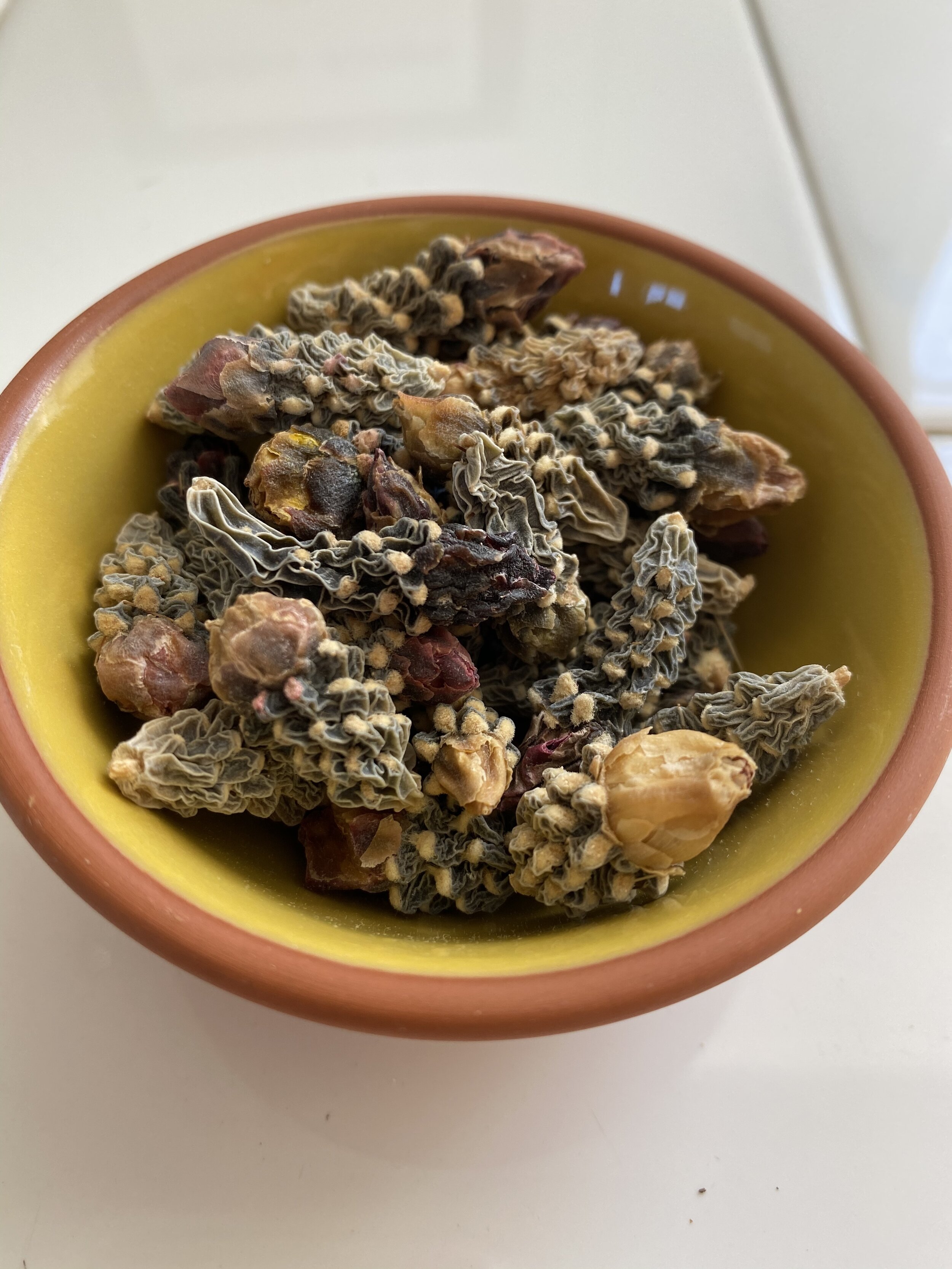Cholla Buds: How to use them and where to buy
The desert teaches us that even in dry and stagnant times, there are still ways to thrive off of the land. A great example of this can be found in cholla buds, which were added to Slow Food’s Ark of Taste in 2015. Their versatility and importance in Tohono O’odham cuisine makes this food so vital to the Sonoran Desert and its surrounding ecosystem.
Slow Food Phoenix board member and research expert on American Indian food sovereignty, Cristal Franco, says ciolim—the O'odham word for cholla bud—has so many great uses for cooking. These buds are specifically found on different species of the cholla cactus, which grow as clusters or “little forests,” and should be harvested carefully as they are covered in spines. Watch as Velvet Button of Ramona Farms carefully removes the spines from the cholla buds.
So how does one prepare cholla buds?
“I like to completely air dry the ciolim and store them for the year,” Cristal said. “When you want to cook with them, rehydrate the buds in a bowl of water before adding them to your pan. My go-tos are chopped cholla buds in omelettes and burritos or whole buds tossed into salads.”
Dehydrated cholla buds from San Xavier Food Co-op Farm
Sara Aly El Sayed, Slow Food Phoenix’s Advocacy Chair and specialist in regenerative food systems, says the taste of cholla buds reminds her of okra, a traditional food in Egypt, where she is from. This context is key when talking about food education and how different cultures can utilize ingredients that are similar to that of their own heritage’s dishes. It creates a great opportunity to connect people to food, culture, and preservation—especially when someone is unfamiliar with a food that grows so abundantly in their own environment.
When searching for cholla buds to try at home, look to support native growers and producers who care deeply for the preservation of these cacti, like the Ajo Farmer’s Market, Native Seeds/SEARCH or the San Xavier Food Co-op Farm.

